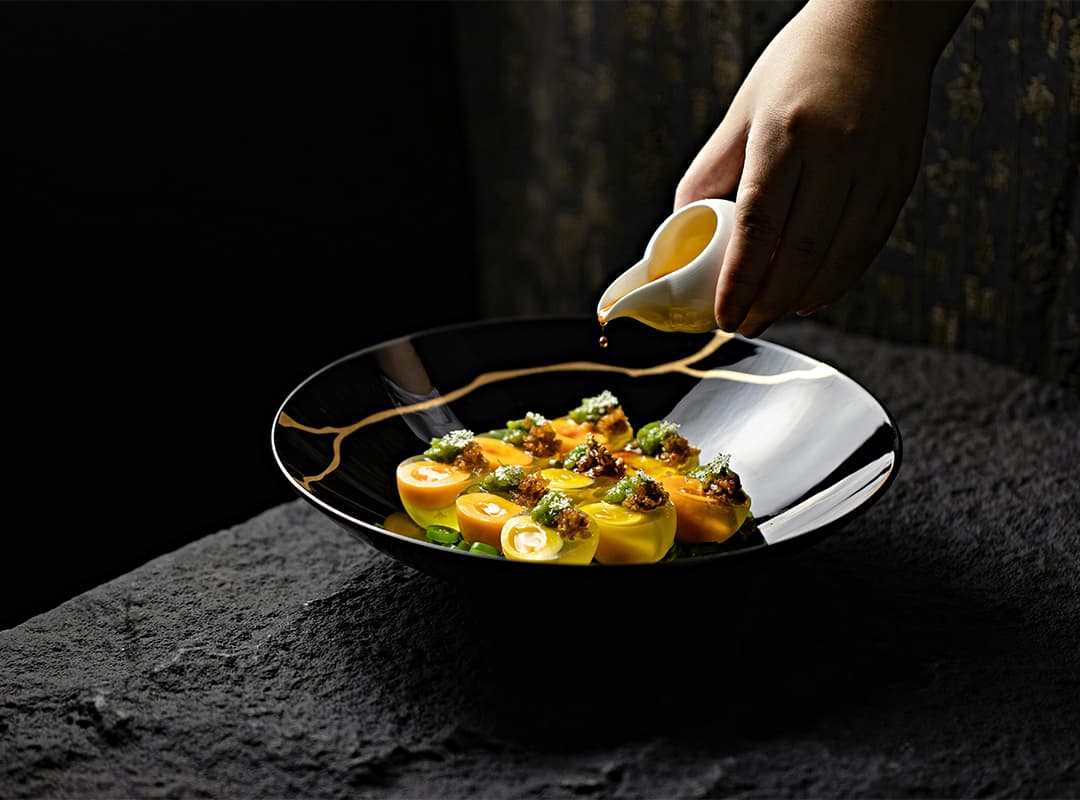This is a culinary trend based on the use of molecular gastronomy, a scientific discipline that studies the physical and chemical processes that occur during food preparation. Molecular gastronomy explores the mechanisms of transformation of all ingredients in cooking. physical aspects of food and liquid interaction, heat conduction, convection, flavor stability, solubility problems, dispersion, texture/flavor relationships, and other processes. Her interests also include the social, technical, and aesthetic components of culinary and gastronomic phenomena.
The term “molecular gastronomy” was coined in 1988 by Oxford physicist Nicholas Curtis and French chemist Hervé Thys of the National Institute of Agricultural Research.
The terms “molecular gastronomy” and “molecular cuisine” are often used synonymously. However, scientists insist on separating these concepts.
Molecular cuisine is associated with chefs who use new tools, ingredients, and methods in cooking. liquid nitrogen, pipettes, edible gels, and various equipment commonly used in scientific laboratories.
Using the achievements of molecular gastronomy in the cooking process makes it possible to create dishes that seem strange but are unexpectedly delicious. Very often, this involves integrating what is already known into something new. For example, here are a few molecular cuisine dishes: a miniature apple cooked to taste like meat; cocktails in ice balls; artificial caviar made from olive oil; spaghetti made from vegetables, and much more.
Molecular cuisine uses many unusual techniques, tools, and ingredients. Let’s take a look at the most popular ones.
Techniques
- Spherification – for making caviar-like spheres with new flavors (apple, olive oil, etc.).
- Use of emulsifiers.
- Flavoring serving dishes or the food itself.
- Fancy or avant-garde presentation style.
- Unusual flavor combinations, such as a combination of spicy and sweet flavors.
- Flash freezing.
- Improved control of cooking temperature.
- Creating new food textures (gels, foams, etc.).
- Use the microwave to create cold or even frozen foods on the outside, but with hot liquid inside.
- Cooking under high pressure.
- Use of high-powered mixing and cutting equipment (e.g. ultrasonic stirring to create emulsions).
Tools
- Liquid nitrogen for flash freezing, without the formation of large ice crystals.
- Anti-skid, for cooling and freezing.
- Controlled water baths for low-temperature cooking.
- Food dehydrator.
- Centrifuge.
- Syringe for filling with various fillings.
- Ultrasonicator.
- Vacuum apparatus.
- Pressure cookers.
- pH meters.
- Tabletop distillers.
Ingredients
- Gelling agents such as methyl cellulose.
- Sweeteners.
- Emulsifiers such as soy lecithin and xanthan gum.
- Non-stick agents.
- Enzymes, such as transglutaminase, a protein binder also called meat glue.
- Carbon dioxide, for adding bubbles and foaming.
- Hydrocolloids, such as starch, gelatin, pectin and natural gums, are used as thickeners, gelling agents, emulsifiers and stabilizers, sometimes required for foaming.
The ingredients used in molecular cuisine are often called textures. They help to change the appearance of the food being prepared without changing its taste and flavor.
